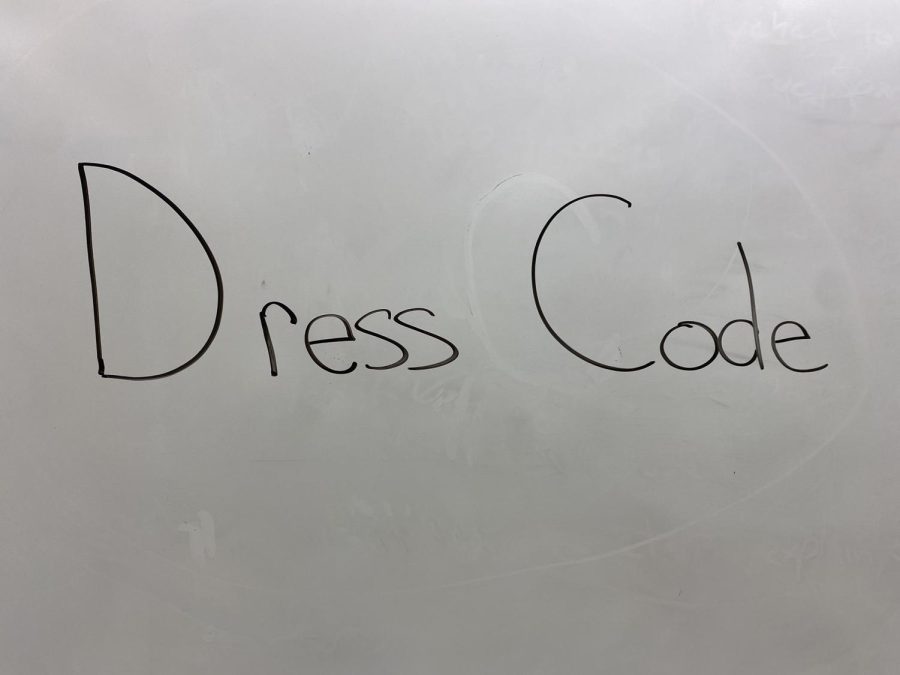Opinion: Is the dress code necessary after all?
Getting dressed in the morning takes up most of my and many other high school students’ time. Recently, students have questioned the possible bias of the dress code. How could it be biased? Where and when did it emerge? Who created it? And why?
The idea has been around for years, but according to FindLaw, the Supreme Court voted to support John and Mary Beth Tinker and fellow students in 1969 during the trial of Tinker vs. the Des Moines Independent School District. During the case there was a split in our world-the Vietnam war. At the time, many people in the U.S wanted to raise awareness. The Tinkers and others began wearing armbands to express themselves and their idea of a protest against the war. The schools did not believe the students should express themselves in that manner but the court overruled the school’s detection.
Once this law was passed, the administrations running schools in the US had to figure out what they would deem “distracting” in a school setting without violating the students’ right to individualism. At first, the only real rules that were established were not violating others or disrupting the learning environment. This rule goes along with our First Amendment, which is the freedom to express yourself whether that be speech, press etc.
Dress codes have always been around, but they are now much more unspoken. In workplaces, women were expected to wear dresses or skirts, never pants or slacks. Many sources say that wearing long skirts and dresses makes you seem more respectable. But how do you define respect by what length your skirt is? As the times have changed, so have dress codes, but the one thing that continues to be present is the extreme gender prejudice. A study done by First Coast News says that 83% of dress code violations handed out by teachers are given to girls in the classrooms.
Although many people are currently disagreeing with the dress code, it seems as though the principals are usually the ones in full support of these protocols. Govins Info says 85 percent of principals say dress code is needed in their schools, rural located school principals showed higher levels of support for their policies.
Many parents, however, disagree drastically. A mother, Nancy Tray gives her thoughts and opinions to the world; she was able to get the records and data from last year and share them with First Coast. The statement Tray put out says, “Female students are significantly more likely to be targeted by the dress code enforcement, ‘Tray said, “It’s not our imagination. It’s not just anecdotal. We have proof now within their own records.”
Many argue that having a dress code is needed in order to maintain focus in a classroom setting, but many disagree. In a study done by The Weekend Talon, 67% of teachers believe the dress code is not fair and equitable. Many teachers also see the unfair dress code but unfortunately have no control over what is in the handbook as the “dress code”.
I went down to the Spanish wing to talk to Señora Jaclyn Couture and here is what she had to say, “I respect the policy because it is the policy, I do feel that it continuously needs to be looked at as a school and as a school community. Based on the message that we are trying to send about people’s bodies and identity and all those things.” She continued on to say that she is aware of the dress code and enforces it, but she likes to have a conversation with the students and let them know why it is against school policy.
After speaking to Couture, another perspective was needed as well. One Oakmont teacher said, “I think it’s gotten better but it is currently constituted more towards females and monitoring their clothing, more than males. I think that if the idea of the dress code is to not allow females to be a distraction to males in the school rather than censoring females, I think we should be teaching males to respect females.”
My final step was to go to Paula Stefanakos, a teacher known to dish out the dress code with a heavy hand. Stefanakos says, “I think that there is a time and place for everything, I think that this is your job for now and you should dress appropriately. Things can be distracting, not just for males.”
While every school needs rules and a handbook, it is important that these rules stay current according to ever-changing societal expectations. It seems there has been recent research done about male gender bias and self-expression. With this in mind, there may be a reason for schools to revisit certain rules such as dress code protocol.

Addi Roy is a member of the class of 2025 at Oakmont. She is a 4 year member of the Oakmonitor, however this year she will be editing! She is a member...












